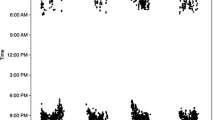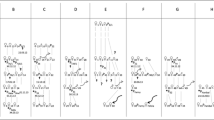Abstract
The dry spiny forest of southern Madagascar is a highly unpredictable environment in terms of the amount and distribution of rainfall. The region is also subject to marked El Niño oscillations. One of the inhabitants of the region is Microcebus griseorufus (Kollman, 1910), the reddish-grey mouse lemur. During the 4 yr of the study, the focal population underwent marked fluctuations in size and exhibited a relatively long reproductive season: September–May. Subjects used daily torpor and expressed opportunistic seasonal fattening when food availability was high. They fed mainly on gum, especially during periods of drought. The estimated sex-ratio of the population is 54% female. Young males dispersed. Females and less frequently, males, associated in same-sex pairs that sometimes joined to form larger sleeping groups. I observed both erratic and resident males, the latter sometimes associated with females in sleeping groups. Mating occurred from September to January and involved mate-guarding. Individual female home ranges (N = 14) overlapped with, on average, 2.8 ± 0.3 male home ranges (range 2–5), whereas individual male home ranges (N = 12) overlapped with 4.7 ± 0.4 female home ranges (range 2–7). Female estrus was not synchronized, even within the female pairs, allowing alloparental care. Gestation lasted 52 d in 1 female, and litter size could be as high as 3; 20 reproductive females out of 37 adult females raised only 1 or 2 young per year.





Similar content being viewed by others
References
Andrès, M., Gachot-Neveu, H., & Perret, M. (2001). Genetic determination of paternity in captive grey mouse lemurs: Pre-copulatory sexual competition rather than sperm competition in a nocturnal prosimian? Behaviour, 138, 1047–1063.
Andrès, M., Solignac, M., & Perret, M. (2003). Mating system in mouse lemurs: theories and facts, using analysis of paternity. Folia Primatologica, 74, 355–366.
Andrews, J. F. (1995). Comparative studies on programs for management of energy supply: Torpor, pre-winter fattening and migration. Proceedings of the Nutrition Society, 54, 301–315.
Atsalis, S. (1999a). Diet of the brown mouse lemur (Microcebus rufus) in Ranonamafana National Park, Madagascar. International Journal of Primatology, 20, 193–229.
Atsalis, S. (1999b). Seasonal fluctuations in body fat and activity levels in a rain-forest species of mouse lemur, Microcebus rufus. International Journal of Primatology, 20, 883–909.
Atsalis, S. (2000). Spatial distribution and population composition of the brown mouse lemur (Microcebus rufus) in Ranomafana National Park, Madagascar, and its implications for social organization. American Journal of Primatology, 51, 61–78.
Brown, J. H., & Sibly, R. M. (2006). Life-history evolution under a production constraint. Proceedings of the National Academy of Sciences of the United States of America, 103, 17595–17599.
Charles-Dominique, P. (1977). Urine marking and territoriality in (=Galago) alleni (Waterhouse, 1837, Lorisoidea, Primates). A field study by radio-telemetry. Zeitshrift für Tierpschychologie, 43, 113–138.
Charles-Dominique, P. (1995). Food distribution and reproductive constraints in the evolution of social structure: Nocturnal primates and other mammals. In I. Alterman, G. A. Doyle, & M. K. Izard (Eds.), Creatures of the Dark: The Nocturnal Prosimians (pp. 425–438). New York: Plenum Press.
Daan, S., & Tinbergen, J. M. (1997). Adaptation of life histories. In J. R. Krebs, & N. B. Davies (Eds.), Behavioural Ecology: An Evolutionary Approach (4th ed., pp. 311–333). Oxford, U.K.: Blackwell.
Dammhahn, M., & Kappeler, P. M. (2005). Social System of Microcebus berthae, the world’s smallest primate. International Journal of Primatology, 26, 407–435.
Dewar, R. E., & Richard, A. F. (2007). Evolution in the hypervariable environment of Madagascar. Proceedings of the National Academies of Sciences, 104, 13723–13727.
Eberle, M., & Kappeler, P. M. (2002). Mouse lemurs in space and time: A test of the socioecological model. Behavioral Ecology and Sociobiology, 51, 131–139.
Eberle, M., & Kappeler, P. M. (2004). Sex in the dark: Determinants and consequences of mixed male mating tactics in Microcebus murinus, a small solitary nocturnal primate. Behavioral Ecology and Sociobiology, 57, 77–90.
Eberle, M., & Kappeler, P. M. (2006). Family insurance: Kin selection and cooperative breeding in a solitary primate (Microcebus murinus). Behavioral Ecology and Sociobiology, 60, 582–588.
Emlen, S. T., & Oring, L. W. (1977). Ecology, sexual selection, and the evolution of mating systems. Science, 197, 215–223.
Génin, F. (2004). Female dominance in competition for gum trees in the grey mouse lemur. Revue d’Ecologie (la Terre et la Vie), 58, 397–410.
Génin, F. (2007). Energy-dependent plasticity of grey mouse lemur social systems: Lessons from field and captive studies. Revue d’Ecologie (la Terre et la Vie), 62, 245–256.
Génin, F., & Perret, M. (2003). Daily hypothermia in captive grey mouse lemurs (Microcebus murinus): Effects of photoperiod and food restriction. Comparative Biochemistry and Physiology B-Biochemistry and Molecular Biology, 136, 71–81.
Génin, F., Schilling, A., & Perret, M. (2005). Social inhibition on seasonal fattening in wild and captive grey mouse lemurs. Physiology and Behavior, 86, 185–194.
Glatston, A. R. (1986). The influence of other females on maternal behaviour and breeding success in the lesser mouse lemur (Microcebus murinus). In J. G. Else, & P. C. Lee (Eds.), Primate Ontogeny, Cognition, and Social Behaviour (pp. 355–361). Cambridge, U.K.: Cambridge University Press.
Gould, L., Sussman, R. W., & Sauther, M. L. (1999). Natural disasters and primate populations: The effects of a two-year drought on a naturally occurring population of ring-tailed lemurs (Lemur catta) in southwestern Madagascar. International Journal of Primatology, 20, 69–84.
Jolly, A., Dobson, A., Rasamimanana, H. M., Walker, J., O’Connor, S., Solberg, M., & Perel, V. (2002). Demography of Lemur catta at Berenty Reserve, Madagascar: Effects of troop size, habitat and rainfall. International Journal of Primatology, 23, 327–353.
Kutsukake, N., & Nunn, C. L. (2006). Comparative tests of reproductive skew in male primates: The roles of demographic factors and incomplete control. Behavioral Ecology and Sociobiology, 60, 695–706.
Lahann, P., Schmid, J., & Ganzhorn, J. U. (2006). Geographic variation in populations of Microcebus murinus in Madagascar: Resource seasonality or Bergmann’s rule? International Journal of Primatology, 27, 983–999.
Lovegrove, B. G. (2003). The influence of climate on the basal metabolic rate of small mammals: A slow-fast metabolic continuum. Journal of Comparative Physiology B-Biochemical, Systemic, and Environmental Physiology, 173, 87–112.
Lovegrove, B. G., & Raman, J. (1998). Torpor patterns in the pouched mouse (Saccostomus campestris; Rodentia): A model animal for unpredictable environments. Journal of Comparative Physiology B-Biochemical, Systemic, and Environmental Physiology, 168, 303–312.
Lutermann, H. (2002). Communal care in gray mouse lemurs (Microcebus murinus). In 19th Congress of the International Primatological Society. Beijing, China: Mammalogical Society of China.
Martin, R. D. (1972). A preliminary field study of the lesser mouse lemur (Microcebus murinus, Miller 1977). Zeitshrift für Tierpschychologie (Suppl), 9, 42–90.
Ostfeld, R. S. (1990). The ecology of territoriality in small mammals. Trends in Ecology and Evolution, 5, 411–415.
Pereira, M. E. (1991). Asynchrony within estrous synchrony among ringtailed lemurs (primates: lemuridae). Physiology and Behavior, 49, 47–52.
Perret, M., & Aujard, F. (2001). Regulation by photoperiod of seasonal changes in body mass and reproductive function in gray mouse lemurs (Microcebus murinus): differential responses by sex. International Journal of Primatology, 22, 5–24.
Radespiel, U. (2000). Sociality in the gray mouse lemur (Microcebus murinus) in northwestern Madagascar. American Journal of Primatology, 51, 21–40.
Radespiel, U., Lutermann, H., Schmelting, B., Bruford, M. W., & Zimmermann, E. (2003). Patterns and dynamics of sex-biased dispersal in a nocturnal primate, the grey mouse lemur, Microcebus murinus. Animal Behaviour, 65, 709–719.
Radespiel, U., Reimann, W., Rahelinirina, M., & Zimmermann, E. (2006). Feeding ecology of sympatric mouse lemur species in Northwestern Madagascar. International Journal of Primatology, 27, 311–321.
Randrianambinina, B., Rakotondravony, D., Radespiel, U., & Zimmermann, E. (2003). Seasonal changes in general activity, body mass and reproduction of 2 small nocturnal primates: A comparison of the golden brown mouse lemur (Microcebus ravelobensis) in Northwestern Madagascar and in the brown mouse lemur (Microcebus rufus) in eastern Madagascar. Primates, 44, 321–331.
Rasoloarison, R. M., Goodman, S. M., & Ganzhorn, J. U. (2000). Taxonomic revision of mouse lemurs (Microcebus) in the western portions of Madagascar. International Journal of Primatology, 21, 963–1019.
Schilling, A. (2000). Sens et communication chez le microcèbe. Primatologie, 2, 85–143.
Schmelting, B., Ehresmann, P., Lutermann, H., Randrianambinina, B., & Zimmermann, E. (2000). Reproduction of two sympatric mouse lemur species (Microcebus murinus and M. ravelobensis in north-west Madagascar: First results of a long term study. In W. R. Lourenço, & S. M. Goodman (Eds.), Diversité et endémisme à Madagascar (pp. 165–175). Paris: Mémoire de la Société de Biogéographie.
Schmid, J. (2000). Daily torpor in free-ranging gray mouse lemurs (Microcebus murinus) in Madagascar. International Journal of Primatology, 22, 1021–1031.
Schmid, J., & Kappeler, P. M. (1998). Fluctuating sexual dimorphism and differential hibernation by sex in a primate, the grey mouse lemur (Microcebus murinus). Behavioral Ecology and Sociobiology, 43, 125–132.
Schmid, J., Ruf, T., & Heldmaier, G. (2000). Metabolism and temperature regulation during daily torpor in the smallest primate, the pygmy mouse lemur (Microcebus myoxinus) in Madagascar. Journal of Comparative Physiology B-Biochemical, Systemic, and Environmental Physiology, 170, 59–68.
Schwab, D. (2000). A preliminary study of spatial distribution and mating system of pygmy mouse lemurs (Microcebus cf myoxinus). American Journal of Primatology, 51, 41–60.
Sterling, E. J., Nguyen, N., & Fashing, P. J. (2000). Spatial patterning in nocturnal prosimians: A review of methods and relevance to studies of sociality. American Journal of Primatology, 51, 3–19.
Wrangham, R. W. (1980). An ecological model of female-bonded primate groups. Behaviour, 75, 262–300.
Yoder, A. D., Burns, M. M., & Génin, F. (2002). Molecular evidence of reproductive isolation in sympatric sibling species of mouse lemurs. International Journal of Primatology, 23, 1335–1343.
Acknowledgments
The Fyssen Foundation (2003–2004), the French Museum of Natural History (2000, 2005–2006), the Société Francophone de Primatologie (2005–2006), and the South African National Research Foundation (2007) funded this work. I thank Jörg Ganzhorn (Zoologishes Institut und Zoologishes Museum, Hamburg, Germany), Bruno Simmen (CNRS, France), Prosper (PBZT, Madagascar), Mike Perrin (University of KwaZulu Natal, South Africa), Thibault Dieuleveut and the Projet Ifotaka (Tandroy Conservation Trust, Fort Dauphin, Madagascar) for their support, and Jim Hansen and the students of the School of International Training of Fort Dauphin for their help in the field in 2004. I thank J. de Heaulme for his welcome in the Berenty Private Reserve and for providing rainfall data. I thank Judith Masters and 2 anonymous reviewers for their contributions to the improvement of the manuscript.
Author information
Authors and Affiliations
Corresponding author
Rights and permissions
About this article
Cite this article
Génin, F. Life in Unpredictable Environments: First Investigation of the Natural History of Microcebus griseorufus . Int J Primatol 29, 303–321 (2008). https://doi.org/10.1007/s10764-008-9243-z
Received:
Accepted:
Published:
Issue Date:
DOI: https://doi.org/10.1007/s10764-008-9243-z




